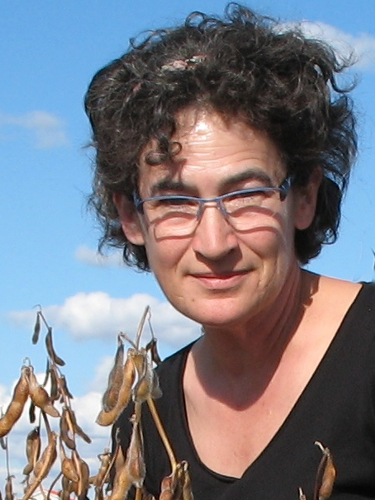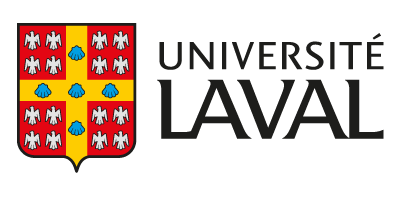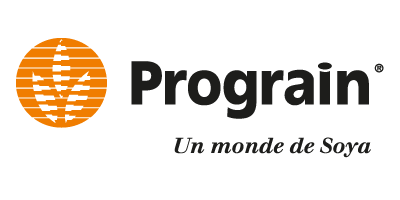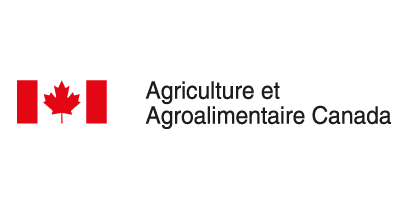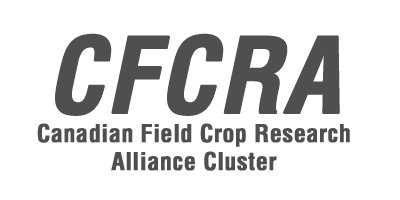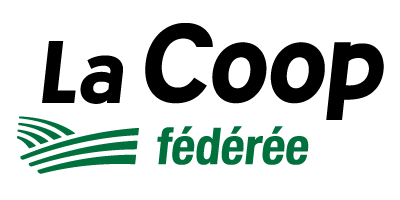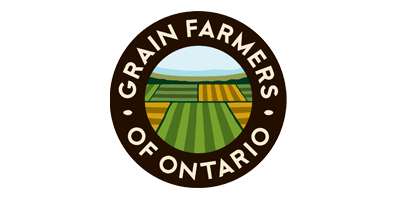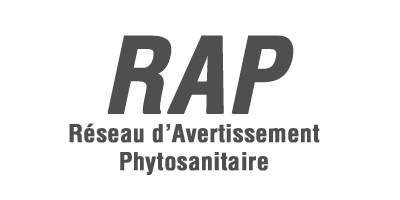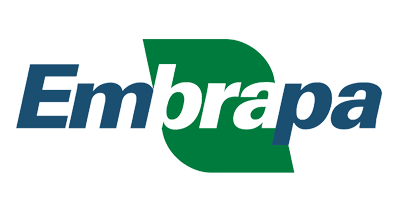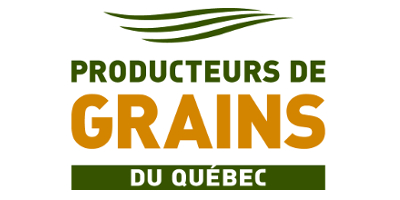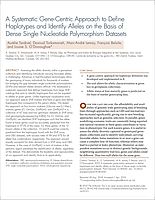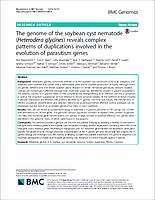Notre projet de recherche
Équipe
-
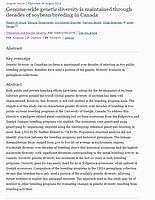 Genome-wide genetic diversity is maintained through decades of soybean breeding in Canada
Genome-wide genetic diversity is maintained through decades of soybean breeding in Canada
Key message
Genetic diversity in Canadian soybean is maintained over decades of selection in two public breeding programs. Breeders have used a...
-
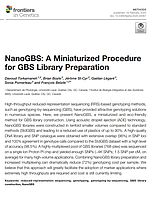 NanoGBS: A Miniaturized Procedure for GBS Library Preparation
NanoGBS: A Miniaturized Procedure for GBS Library Preparation
High-throughput reduced-representation sequencing (RRS)-based genotyping methods, such as genotyping-by-sequencing (GBS), have provided attractive...
-
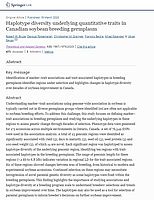 Haplotype diversity underlying quantitative traits in Canadian soybean breeding germplasm
Haplotype diversity underlying quantitative traits in Canadian soybean breeding germplasm
Key message
Identification of marker–trait associations and trait-associated haplotypes in breeding germplasm identifies regions under selection and...
-
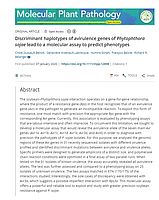 Discriminant haplotypes of avirulence genes of Phytophthora sojae lead to a molecular assay to predict phenotypes
Discriminant haplotypes of avirulence genes of Phytophthora sojae lead to a molecular assay to predict phenotypes
The soybean–Phytophthora sojae interaction operates on a gene-for-gene relationship, where the product of a resistance gene (Rps) in the host...
-
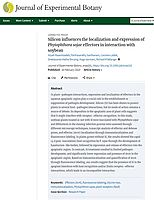 Silicon influences the localization and expression of Phytophthora sojae effectors in interaction with soybean
Silicon influences the localization and expression of Phytophthora sojae effectors in interaction with soybean
In plant–pathogen interactions, expression and localization of effectors in the aqueous apoplastic region play a crucial role in the establishment or...
-
 Genome-wide association mapping of Sclerotinia sclerotiorum resistance in soybean using whole-genome resequencing data
Genome-wide association mapping of Sclerotinia sclerotiorum resistance in soybean using whole-genome resequencing data
Background
Sclerotinia stem rot (SSR), caused by Sclerotinia sclerotiorum (Lib.) de Bary, is an important cause of yield loss in soybean. Although...
-
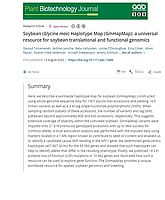 Soybean (Glycine max) Haplotype Map (GmHapMap): a universal resource for soybean translational and functional genomics
Soybean (Glycine max) Haplotype Map (GmHapMap): a universal resource for soybean translational and functional genomics
Here, we describe a worldwide haplotype map for soybean (GmHapMap) constructed using whole‐genome sequence data for 1007 Glycine max accessions and...
-
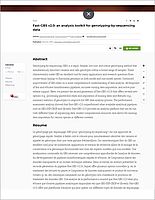 Fast-GBS v2.0: an analysis toolkit for genotyping-by-sequencing data
Fast-GBS v2.0: an analysis toolkit for genotyping-by-sequencing data
Genotyping-by-sequencing (GBS) is a rapid, flexible, low-cost, and robust genotyping method that simultaneously discovers variants and calls genotypes...
-
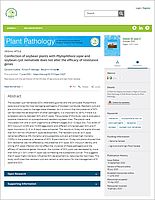 Coinfection of soybean plants with Phytophthora sojae and soybean cyst nematode does not alter the efficacy of resistance genes
Coinfection of soybean plants with Phytophthora sojae and soybean cyst nematode does not alter the efficacy of resistance genes
The soybean cyst nematode (SCN) Heterodera glycines and the oomycete Phytophthora sojae are among the most damaging pathogens of soybean worldwide....
-
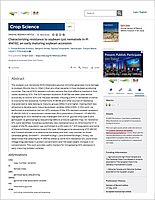 Characterizing resistance to soybean cyst nematode in PI 494182,an early maturing soybean accession
Characterizing resistance to soybean cyst nematode in PI 494182,an early maturing soybean accession
The soybean cyst nematode (SCN) (Heterodera glycinesIchinohe) generates more damage to soybean [Glycine max(L.) Merr.] than any other parasite in most...
-
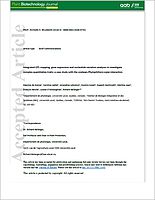 Integrated QTL mapping, gene expression and nucleotide variation analyses to investigate complex quantitative traits: a case study with the soybean-Phytophthora sojae interaction
Integrated QTL mapping, gene expression and nucleotide variation analyses to investigate complex quantitative traits: a case study with the soybean-Phytophthora sojae interaction
Soybean (Glycine max (L.) Merr.) is the most important legume in the world(Dorff, 2007; Shoemaker et al., 1996). However, the rapid expansion of its...
-
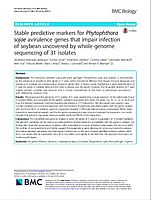 Stable predictive markers for Phytophthora sojae avirulence genes that impair infection of soybean uncovered by whole genome sequencing of 31 isolates
Stable predictive markers for Phytophthora sojae avirulence genes that impair infection of soybean uncovered by whole genome sequencing of 31 isolates
Background: The interaction between oomycete plant pathogen Phytophthora sojae and soybean is characterized by the presence of avirulence (Avr) genes...
-
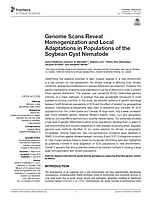 Genome Scans Reveal Homogenization and Local Adaptations in Populations of the Soybean Cyst Nematode
Genome Scans Reveal Homogenization and Local Adaptations in Populations of the Soybean Cyst Nematode
Determining the adaptive potential of alien invasive species in a new environment is a key concern for risk assessment. As climate change is affecting...
-
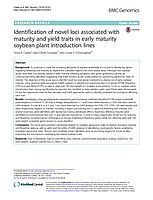 Identification of novel loci associated with maturity and yield traits in early maturity soybean plant introduction lines
Identification of novel loci associated with maturity and yield traits in early maturity soybean plant introduction lines
Background
To continue to meet the increasing demands of soybean worldwide, it is crucial to identify key genes regulating flowering and maturity to...
-
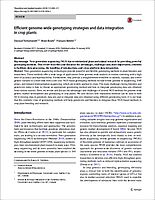 Efficient genome-wide genotyping strategies and data integration in crop plants
Efficient genome-wide genotyping strategies and data integration in crop plants
Next-generation sequencing technologies provide powerful and flexible genotyping methods to plant breeders and researchers. These methods offer a wide...
-
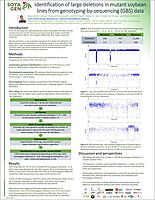 Identification of large deletions in mutant soybean lines from genotyping-by-sequencing (GBS) data
Identification of large deletions in mutant soybean lines from genotyping-by-sequencing (GBS) data
Genotyping-by-sequencing (GBS) allows efficient identification and genotyping of a large number of molecular markers by sequencing a constant subset...
-
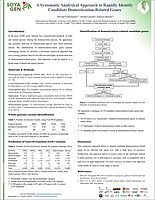 A Systematic Analytical Approach to Rapidly Identify Candidate Domestication-Related Genes
A Systematic Analytical Approach to Rapidly Identify Candidate Domestication-Related Genes
Domestication is an important key co-evolutionary process through which humans have extensively altered the genomic make-up and appearance of both...
-
 Development of a simple hydroponic assay to study vertical and horizontal resistance of soybean and pathotypes of Phytophthora sojae
Development of a simple hydroponic assay to study vertical and horizontal resistance of soybean and pathotypes of Phytophthora sojae
Phytophthora root rot, caused by Phytophthora sojae, is one of the most damaging diseases of soybean and the introgression of Rps (Resistance to P....
-
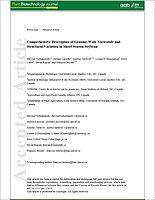 Comprehensive Description of Genome-Wide Nucleotide and Structural Variation in Short-Season Soybean
Comprehensive Description of Genome-Wide Nucleotide and Structural Variation in Short-Season Soybean
Next-generation sequencing (NGS) and bioinformatics tools have greatly facilitated the characterization of nucleotide variation; nonetheless, an...
-
 Comprehensive Description of Genome-Wide Nucleotide and Structural Variation in Short-Season Soybean
Comprehensive Description of Genome-Wide Nucleotide and Structural Variation in Short-Season Soybean
Next-generation sequencing (NGS) and bioinformatics tools have greatly facilitated the characterization of nucleotide variation; nonetheless, an...
-
 Combining high-throughput molecular approaches and QTL analysis to select genes showing differential response to Sclerotinia stem rot in soybean
Combining high-throughput molecular approaches and QTL analysis to select genes showing differential response to Sclerotinia stem rot in soybean
The tremendous throughput of modern DNA sequencing technology has allowed the resequencing of hundreds of soybean accessions, thus providing a...
-
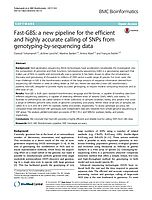 Fast-GBS: a new pipeline for the efficient and highly accurate calling of SNPs from genotyping-by-sequencing data
Fast-GBS: a new pipeline for the efficient and highly accurate calling of SNPs from genotyping-by-sequencing data
Background: Next-generation sequencing (NGS) technologies have accelerated considerably the investigation into the composition of genomes and their...
-
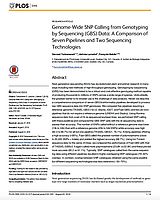 Genome-Wide SNP Calling from Genotyping by Sequencing (GBS) Data: A Comparison of Seven Pipelines and Two Sequencing Technologies
Genome-Wide SNP Calling from Genotyping by Sequencing (GBS) Data: A Comparison of Seven Pipelines and Two Sequencing Technologies
Next-generation sequencing (NGS) has revolutionized plant and animal research in many ways including new methods of high throughput genotyping....
-
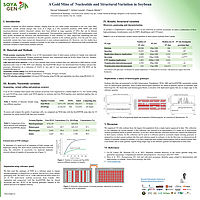 A gold mine of nucleotide and structural variation in soybean
A gold mine of nucleotide and structural variation in soybean
In this work, we report the resequencing of a collection of 102 Canadian soybean accessions. Selection of these lines was guided by a detailed...
-
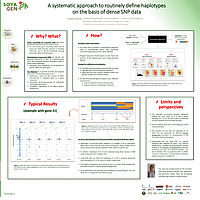 A systematic approach to routinely define haplotypes (and alleles) on the basis of dense SNP data
A systematic approach to routinely define haplotypes (and alleles) on the basis of dense SNP data
Genes responsible for economic traits have been abundantly reported and still continue to be. For such known genes, breeding mostly aims to assess the...
-
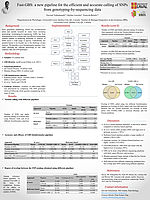 Fast-GBS: a new pipeline for the efficient and accurate calling of SNPs from genotyping-by-sequencing data
Fast-GBS: a new pipeline for the efficient and accurate calling of SNPs from genotyping-by-sequencing data
Genotyping-by-sequencing (GBS) has been demonstrated to be a robust and cost-effective genotyping method capable of producing thousands to millions of...











